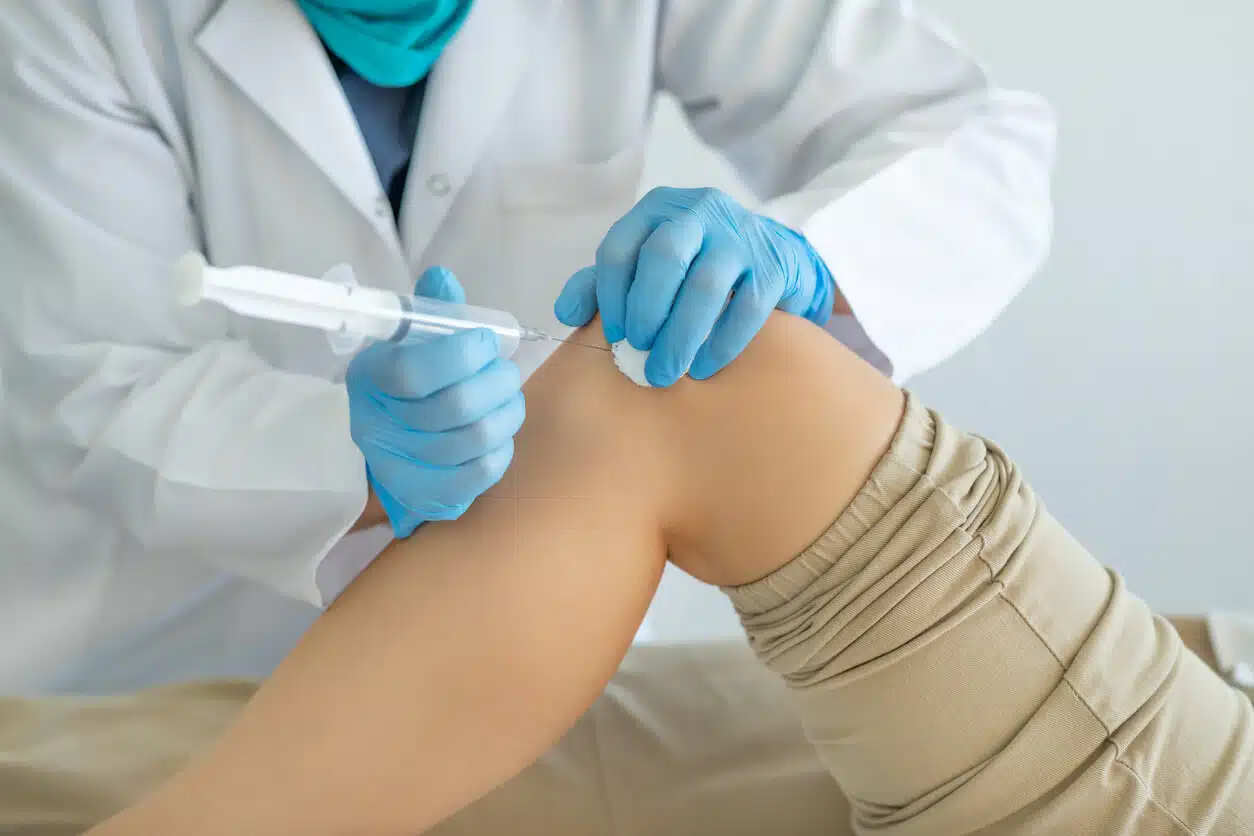Knee Pain Treatment In Nagpur

Knee Pain Treatment In Nagpur
Common Causes of Knee Pain
Knee pain can occur for a variety of reasons, including:
- Osteoarthritis: The most common form of arthritis, causing the cartilage in the knee joint to wear down over time, leading to pain and stiffness.
- Tendonitis: Inflammation or irritation of the tendons surrounding the knee joint, often due to overuse or injury.
- Ligament Injuries: Injuries such as ACL (anterior cruciate ligament) tears or MCL (medial collateral ligament) sprains can cause significant pain and instability.
- Meniscus Tears: Damage to the cartilage that acts as a cushion between the shinbone and the thighbone, often resulting in pain, swelling, and limited movement.
Non-Surgical Knee Pain Treatment
Physical Therapy (PT) One of the most effective treatments for knee pain is physical therapy. A licensed therapist will design a personalized program of exercises to strengthen the muscles around the knee joint, improve flexibility, and increase range of motion. Physical therapy can be highly effective in restoring function and alleviating pain, especially for conditions like arthritis, tendonitis, and post-injury recovery.
Over-the-Counter Medications Nonsteroidal anti-inflammatory drugs (NSAIDs) like ibuprofen or aspirin can be used to reduce inflammation and relieve pain. For less severe cases, acetaminophen may also provide relief. However, it’s important to follow the recommended dosage and not rely on medications long-term.
Corticosteroid Injections For more severe knee pain, especially from arthritis or inflammation, corticosteroid injections may offer significant relief. These injections deliver powerful anti-inflammatory medication directly into the knee joint, providing temporary but effective pain reduction. This can help individuals engage in physical therapy and other rehabilitation exercises.
Viscosupplementation (Hyaluronic Acid Injections) In cases of knee osteoarthritis, hyaluronic acid injections may help lubricate the knee joint and reduce pain. The injections restore the lost cushioning and improve joint function, making movement less painful.
Cold and Heat Therapy Applying ice packs or cold compresses can reduce swelling and numb the pain, particularly in the first 48 hours after an injury. Heat therapy, such as heating pads or warm baths, can improve blood circulation, relax tight muscles, and alleviate stiffness.
Lifestyle Modifications Making lifestyle adjustments can prevent further knee pain. For instance, maintaining a healthy weight reduces the strain on your knees. Avoiding activities that exacerbate knee pain (e.g., high-impact sports or excessive walking) can also help manage discomfort.
Surgical Knee Pain Treatment
If non-surgical treatments do not provide adequate relief, or if the knee joint is severely damaged, surgical intervention may be necessary.
Arthroscopy Knee arthroscopy is a minimally invasive procedure in which a small camera is inserted into the knee joint to diagnose and treat various knee problems. Surgeons can remove damaged tissue, repair torn cartilage, and even smooth rough areas of bone or cartilage.
Knee Replacement Surgery (Total or Partial) For individuals with advanced knee arthritis or extensive damage to the joint, knee replacement surgery may be the most effective solution. In this procedure, the damaged joint is replaced with an artificial prosthesis. A total knee replacement involves replacing the entire knee joint, while partial knee replacement targets only the damaged area.
Meniscus Repair or Removal If you have a meniscus tear, surgery may be required to repair or remove the damaged cartilage. A meniscectomy involves removing the torn piece of cartilage, while a meniscus repair stitches the tear back together. The choice of procedure depends on the size and location of the tear.
Ligament Reconstruction Surgery For those with ligament injuries like an ACL tear, ligament reconstruction surgery can restore stability to the knee. During the procedure, the damaged ligament is replaced with tissue taken from another part of the body or from a donor.
Preventing Knee Pain: Tips for Long-Term Health
Preventing knee pain is as important as treating it. To protect your knees and maintain long-term joint health:
- Strengthen the Muscles Around the Knee: Exercises that focus on strengthening the quadriceps, hamstrings, and calves can provide better support for your knee joints.
- Stretch Regularly: Stretching can improve flexibility and reduce the risk of injury, especially for athletes and active individuals.
- Use Proper Footwear: Supportive shoes can help maintain proper alignment and reduce strain on your knees. Avoid high heels and shoes that lack cushioning.
- Avoid High-Impact Activities: If you have existing knee pain, avoid activities like running on hard surfaces. Opt for low-impact exercises like cycling, swimming, or using an elliptical machine.
- Maintain a Healthy Weight: Extra weight can put undue stress on your knees, leading to pain and joint damage over time.
